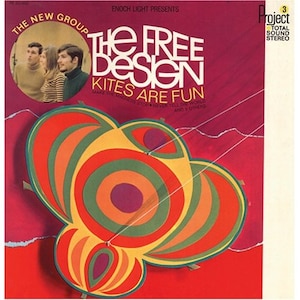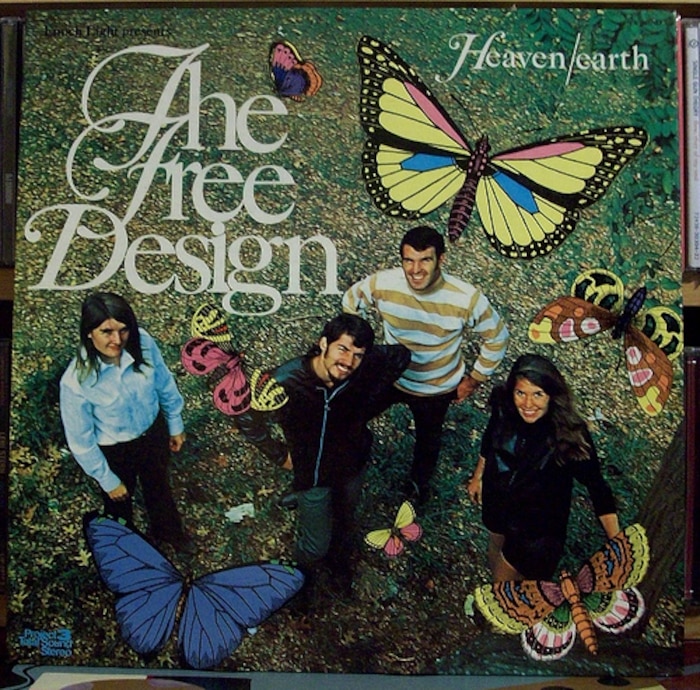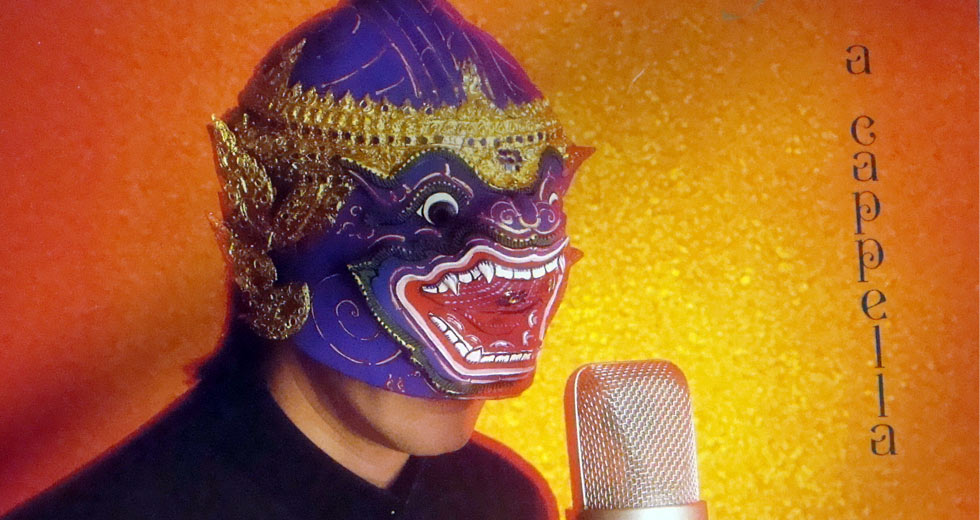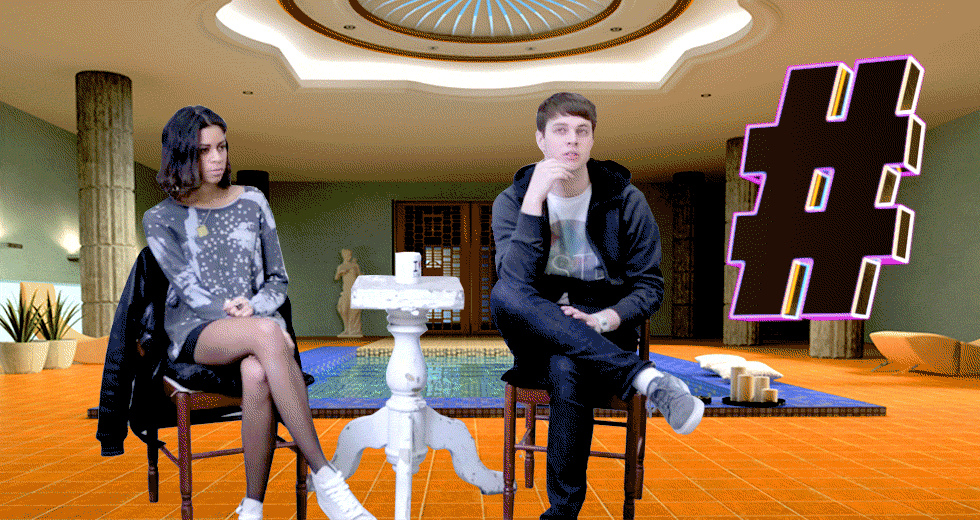Psychedelic Sunshine: Interview with The Free Design
Vocalist Sandra Dedrick of the influential sunshine-psych-pop-vocal-jazz band, The Free Design, speaks with us regarding the history of the band, their intense choral arrangements, and the continued relevance of their sound in contemporary music
The "middle-of-the-road" music genre, commonly referred to as MOR, is a grossly under-appreciated and overlooked section in much of the world’s record stores. Shop owners don't help make things any easier, as the albums typifying this genre are usually found hiding in dusty back corners or along vertical shelves packed impossibly tight and bearing the signifiers "easy listening", "beautiful music" or "instrumental classics." Many younger record shoppers mistakenly write off these sections as insipid, or strictly for the over-sixty, Liberace-loving crowd. Sometimes they are right. Other times, as in the case of groups like the Free Design, they are completely, irrevocably wrong.
Hailing from the Blue Hill region of western New York, the Free Design recorded six albums for Enoch Light’s revered Project 3 Records (one of the better MOR labels, btw) during the span of five years or so in the late '60s, early '70s. The band’s "sound" was firmly rooted in the crisp, complex vocal harmonies of groups like The Hi-Lo’s or The Four Freshmen, though the subject matter and delivery revealed a psychedelic bent not found in their predecessors. The line-up was strictly a family affair, and consisted of siblings Chris, Bruce, Sandy, Ellen and Stefanie Dedrick. All played instruments. All sang. The only explanation for this genealogical anomaly is that the siblings' parents were both employed as local music teachers.
Bafflingly, the group never achieved the commercial success deserved, though many would argue that their songs were superior to much of the light-psych sunshine pop dominating the airwaves at the time. This disappointment was most likely due not to poor songwriting, but to the limitations of their contract with Project 3 - which offered full creative license for the group, but little in the way of mainstream promotion. Nevertheless, their records got out and have turned into cult favorites among influential artists such as Beck, Broadcast, Cornelius, High Llamas, Pizzacato 5, and Stereolab – who even name-checked The Free Design as a song title on their 'Cobra And Phases Group Play Voltage In The Milky Night' LP.
While original copies of Free Design albums can prove frustratingly elusive to find, the Seattle-based Light In The Attic label has thankfully reissued all of the their records on vinyl and CD over the past eight years, providing the group with a whole new generation of believers.
Tell me a bit about your early musical memories - what were you listening to?
We all loved jazz because that’s what my parents played all the time. My Dad played Duke Ellington, Count Basie and all the great big band recordings. He himself was a fine trombonist and had played with Vaughn Monroe’s band, and thereafter, formed his own jazz band, which often rehearsed in our home. We loved hanging around listening and later going to sleep with the vibrations of the string bass permeating the house.
All six of us learned instruments, and as teenagers, Dad sometimes let us sit in with his band – even sing occasionally! We also listened to many of the great jazz and blues singers of the day. Then along came The Four Freshmen and The Hi-Lo's. The Hi-Lo's in particular were an influence on Chris’ songwriting from the beginning.
Being that the Free Design was a family affair, please set the scene for me. How were songwriting, practicing and performances geared before the first album, Kites Are Fun, was released?
Chris and Bruce and I moved to New York City around the same time, and because of Bruce’s initiative - he loved singing and playing guitar - we began to get together in my apartment to sing just for fun. We sang and harmonized Peter, Paul and Mary songs and friends and family thought we sounded pretty good, so we called ourselves The Village Fare and went down to Greenwich Village to sing for free in coffee houses like the Bitter End. Then Chris wrote "Kites Are Fun". That was the real beginning of The Free Design, even before we had the name. With encouragement from our Dad and others, Chris wrote a second song called "The Proper Ornaments" which had some great brass parts. Our dad made a demo of the two songs, and my husband at that time took it around New York and almost immediately got offers of contracts from several record companies. We chose Enoch Light’s Project 3 label and recorded six albums with him in the next five years. It was an amazing time for us, having come from Delevan, New York – a tiny town south of Buffalo in farm country – moving to New York City, and suddenly launching a musical career.
The song writing at first was also a family affair, spearheaded by Chris. We suddenly had to have an album’s worth of songs, and I remember wonderful times going home on weekends and holidays and sitting around the living room, Chris and Bruce playing guitar, practicing the songs that were ready, like "Kites" – and writing new ones with ideas, rhymes, melodies sometimes coming from younger siblings still in high school. You'll see on the credits on that first album the results of those good times and collaborations. Fortunately, Chris had an incredible flair for arranging as well as songwriting, so by the time we went into the studio to record, the vocals and instrumentals were all written out by him, and we and the musicians read the charts. On the succeeding albums, Chris did most of the writing, although the rest of us continued to contribute some songs.

Obviously, getting to be on Enoch Light’s label must have been great. It seems like he gave lots of artistic freedom. Can you explain how the signing to the label came out? Did you meet him personally?
It really was great and it’s true, he gave us a lot of artistic freedom. We were able to do mostly our own original material, with two to four covers of songs he suggested – but he accepted our choices in that realm as well. When our sister Ellen graduated from high school he agreed to expand the group to include her. One of the greatest things about being on the Project 3 label was the fact that in every way, the label was synonymous with quality. We found ourselves in every session singing with the top musicians in New York City, in the finest studio with the best engineer, Phil Ramone. I still love listening to our recordings, knowing who was playing those incredible lines and solos and remembering the sense of awe we had at the time. Enoch was always present at the sessions, as was my Dad. Both of them were keen listeners and quiet but great encouragers. We never regretted signing with Project 3.
As the Kites Are Fun single hit the local charts, were you all playing many shows at the time? If so, what did the Free Design show look like?
We didn’t "go on the road" immediately. Amazingly, we began to get TV appearances first, beginning with Johnny Carson’s 'Tonight Show' – then many appearances on Mike Douglas, Merv Griffin, Dick Cavett etc. Even Captain Kangaroo and a two-week stint on Arthur Godfrey’s radio show.
The shows we did do at first started out simply with Chris and Bruce playing acoustic guitars, and me playing tambourine to accompany our singing. Later, my father’s company, which was beginning to publish the songs, began to buy us sound equipment, a keyboard which I played, electric bass and guitar, etc. For a comparatively short time, we even all got out instruments some of us hadn’t played since high school; my alto sax, Ellen's trumpet, Bruce's trombone. Chris wrote us parts, and led with trumpet, which he was majoring in at the time in the Manhattan School of Music – and, after singing a few verses, we’d grab our instruments and play a rousing chorus. That was fun but we dropped it soon enough.
Our chart success was elusive because Project 3 was not a rock & roll label but an MOR label until they signed us on.
When we started getting serious about performing more widely, Bob Papaleoni, 'Pappy' we called him, joined us on drums. Then later, after a stint in the air force, two of Chris' friends and fellow musicians from the Airmen Of Note - Gary Gauger and Tom Szczesniak - joined us. Gary on drums and Tom on keyboards and bass. A really good band!
We played some clubs, but more often in universities, sometimes doing workshops with their choirs before an evening concert. We also did special concerts with symphony orchestras, which were wonderful! This development of a performance career happened over the span of time in which we were recording all the albums.
Even though the songs are whimsical and richly melodic, there seemed to be a slight psychedelic bent to them. Was that scene much of an influence at the time?
I know we were all influenced by the atmosphere of the times, and were searching, like so many others, for meaning in our lives. We weren’t into drugs because we didn’t feel the answers would be found there. But we were very deeply into music. Just speaking from my own experience, here’s a short vignette: as a 13-year old, I went to a Stan Kenton concert and was blown against the back wall when the whole brass section stood up to play. I didn’t know what hit me, but went home to write in my diary that, "I have to go into music because of how I felt hearing those sounds – I just know music will bring me closer to the meaning of life!" And it did.
In an interview Chris once did, he described our music as "Blue Hill Music". Blue Hill is the beautiful area of rolling hills in western New York State where we grew up and which inspired much of the whimsy and melody of his songwriting, as well as the songs the rest of us wrote.
Why do you think mainstream success was so elusive? Why did you decide to call it quits in 1972?
Our chart success was elusive because Project 3 was not a rock 'n' roll label but an MOR label until they signed us on, and simply wasn’t set up to quickly distribute singles and generate sales when airplay for Kites Are Fun started happening. They did gradually get our albums out there. In retrospect, especially considering the benefits we are reaping now, it was a good thing to have signed with Enoch Light. I wonder if this wonderful body of original songs would ever have been recorded if we had signed with another company. We also never went on the road for any length of time to promote our recordings because of family, school and then air force commitments.
We never formally decided to call it quits. In 1972, Chris moved to Canada and it took several years before my sister and I joined him. We recorded our last Free Design album mostly in Toronto during that time on another label.
And you went on to perform in the Star-Scape Singers? That seemed like still quite a family affair, with Chris still composing songs even. What was the difference in mentality?
We did. Chris, Ellen and I, as well as our younger sister Stefanie, became the nucleus of this ten-voice ensemble. Chris had begun to set to music the spontaneously given poetry of philosopher/musician Kenneth G. Mills. The group expanded into what became The Star-Scape Singers. I would say that the difference in mentality was a more classical, choral and complex approach – but what was always in our hearts didn’t change, and that was the love of music and the conviction that deep involvement in music could bring us closer to the meaning of life, as that 13-year-old girl simply put it.
What did the 80s and 90s hold for you?
Music, music, every day, and lots of traveling! As Star-Scape we often travelled and performed in Western and Eastern Europe, as well as in the States - we sang in Carnegie Hall several times - and Canada.
In the '90s, Chris was writing a great deal for film and television, winning four Gemini awards and 17 nominations for his television documentaries, and a Genie award for his musical score for Guy Maddin’s The Saddest Music In The World.
Then it was in the 1990s that renewed interest in the Free Design began to surface, much to our amazement. First in Japan, then in other countries such as Spain and the UK.
How does it feel to be influential to so many great contemporary bands, especially in Japan, like you say. Do you see many similarities?
It actually feels great. Wonderful! I honestly feel that The Free Design offered something unique, honest and very musical – a slice of life – not just our life, but a wonderful tapestry of many wonderful moments that could be experienced by anyone living and loving music. I love that these great groups have re-designed and expanded upon our songs and sound. Of course, I have heard them and really enjoyed what they have done. I wouldn’t say we are similar, but our music is certainly complimentary. It would be fun to meet them one day, but Japan is very far away from Canada. However, anything is possible.

How did the collaboration with Light in the Attic come about?
I credit Joe Zynczak, my ex-husband with initiating this collaboration. In fact, when Enoch Light passed on, Joe bought the Free Design masters from Project 3 and was instrumental in the reissues that began happening in the 1990s in Japan (Shinko Music), Spain, (Siesta), the UK (Cherry Red), and the USA (Varese Sarabande).
Light in the Attic is an incredible company in Seattle, Washington that reissued all of our albums on vinyl and, for the first time on CDs, between 2002 and 2005. They also have been responsible for many sync licenses for Free Design songs to be used in movies, television shows and commercials. Now that Joe has passed on, my son Jay, who is now a lawyer specializing in intellectual properties and copyright law, has continued the association with Light in the Attic as they reissue Free Design albums once again. He has also created a Free Design website which was launched just this past week. My younger son, Aaron, is a banker and is taking care of all the financial aspects of this venture. You may begin to see how fortunate I am!
What are you up to these days? What does the immediate future hold?
I am involved in several music projects, most of them focused on children. However, the project closest to my heart right now has to do with Chris’ music. As you may know, my brother Chris passed away on August 6, 2010 after a long and courageous struggle with cancer. His wife Moira and I, in going through many of his computer and paper files, found so many beautiful songs that were never recorded. I’ve chosen 15 or so of them, the ones that I just love, and am in the process of recording them as a tribute to Chris and his wonderful musical gifts. Chris believed so strongly in recording music with live musicians as opposed to the common practice today of using computer technology. A fund was set up in his name to help musicians who wanted to use real musicians in their projects. This is my contribution to that fund and that idea. Nine songs have already been recorded with four of the finest musicians in Toronto. Four more songs to go! Tom Szczesniak, who played keyboards and bass with the Free Design, has put this band together.
To me, all that has been happening with the music of the Free Design in recent times could be summed up in two of the lines from one of Chris’ songs called Star Magic: Life is a perfect circle, and love is its centre'.
There is so much more to tell, but I feel that this is a good signing-off place. I thank you so much for the opportunity to tell at least some of the story of The Free Design.

